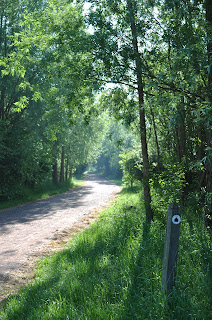When a slightly mischievous (and very much younger, female) friend said this in a stage whisper in a shop recently, just after I’d told the elderly male shop assistant that I had retired a few years ago, it did make me smile; and it certainly made the shop assistant do a quick double take on the situation! But as Eric Morecombe might have said, “They’re the right numbers, they’re just in the wrong order” According to government figures 11 million people that are alive today in this country will reach the age of 100; so even 64 can hardly be classed as genuinely old can it? However maybe it is old enough to glance back; after all, there’s a lot to look back at!
 I have been very lucky. I have never been unemployed. I have rarely been ill. I have always had supportive family and friends. There have been difficult times of course. Recessions aren’t new; I must have lived through at least four. Sometimes, when mortgage interest rates were in double figures, I had to do two jobs. Balancing a family with two young children, treble shift work, a second part time job, being a union rep and studying for an OU degree was never going to be other than exhausting. Looking back I’m not sure how we survived, but we did and we kept a roof over our heads. With the benefit of hindsight, would I do exactly the same again? The answer is that I don’t know. I would like to have been a better father, a better partner, a better friend, a better student. But as Kierkegaard said “Life only makes sense in retrospect, but we have to live it going forwards” You make your decisions as best you can at the time and you live with the consequences.
I have been very lucky. I have never been unemployed. I have rarely been ill. I have always had supportive family and friends. There have been difficult times of course. Recessions aren’t new; I must have lived through at least four. Sometimes, when mortgage interest rates were in double figures, I had to do two jobs. Balancing a family with two young children, treble shift work, a second part time job, being a union rep and studying for an OU degree was never going to be other than exhausting. Looking back I’m not sure how we survived, but we did and we kept a roof over our heads. With the benefit of hindsight, would I do exactly the same again? The answer is that I don’t know. I would like to have been a better father, a better partner, a better friend, a better student. But as Kierkegaard said “Life only makes sense in retrospect, but we have to live it going forwards” You make your decisions as best you can at the time and you live with the consequences. And so, suddenly I arrived at a kind of middle age. In a different job, infinitely more interesting, more rewarding in all kinds of ways but also more stressful; new friends and colleagues, new problems, new skills and the time flies and the years pass... and my children graduate and are adults.... and parents become frail and pass away. In this my life is doubtless the same as countless others, time passes, life moves on. And then, just when I think I am beginning to get this life thing sorted, some fool of a consultant tells me that I have cancer. “Don’t be daft I feel fine” “Well you won’t feel fine if you don’t get it treated” And so you do and it’s all OK again and then your job looks like transferring to London and the same genius of a consultant says “Don’t do it, that really won’t do you any good!”
And so, suddenly I arrived at a kind of middle age. In a different job, infinitely more interesting, more rewarding in all kinds of ways but also more stressful; new friends and colleagues, new problems, new skills and the time flies and the years pass... and my children graduate and are adults.... and parents become frail and pass away. In this my life is doubtless the same as countless others, time passes, life moves on. And then, just when I think I am beginning to get this life thing sorted, some fool of a consultant tells me that I have cancer. “Don’t be daft I feel fine” “Well you won’t feel fine if you don’t get it treated” And so you do and it’s all OK again and then your job looks like transferring to London and the same genius of a consultant says “Don’t do it, that really won’t do you any good!”So I retire early and that’s about where I am now, 5 or 6 years later. And it’s been a blast and it still is. I volunteer for a couple of conservation charities and in those years I’ve been frozen, sunburnt, soaked and bitten by unpronounceable insects in unmentionable places. I’ve broken an arm, cut my head open and fell in a moat and I wouldn’t have missed any of it for the world. I have a wonderful family and fantastic friends and, OK if just occasionally, I think I would give everything I have to be thirty years younger, I know that life, just as it is, is very good indeed.





